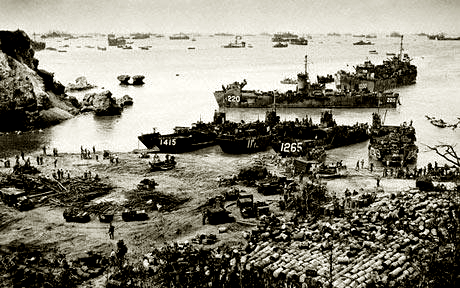दुनिया के मुसलमान कितने पंथों में बंटे हैं?
- सलाहुद्दीन ज़ैन
चरमपंथ और इस्लाम के जुड़ते रिश्तों से परेशान भारत में इस्लाम की बरेलवी विचारधारा के सूफियों और नुमाइंदों ने एक कांफ्रेंस कर कहा कि वो दहशतगर्दी के खिलाफ हैं। सिर्फ इतना ही नहीं बरेलवी समुदाय ने इसके लिए वहाबी विचारधारा को जिम्मेदार ठहराया।
इन आरोप-प्रत्यारोप के बीच सभी की दिलचस्पी इस बात में बढ़ गई है कि आखिर ये वहाबी विचारधारा क्या है। लोग जानना चाहते हैं कि मुस्लिम समाज कितने पंथों में बंटा है और वे किस तरह एक दूसरे से अलग हैं?
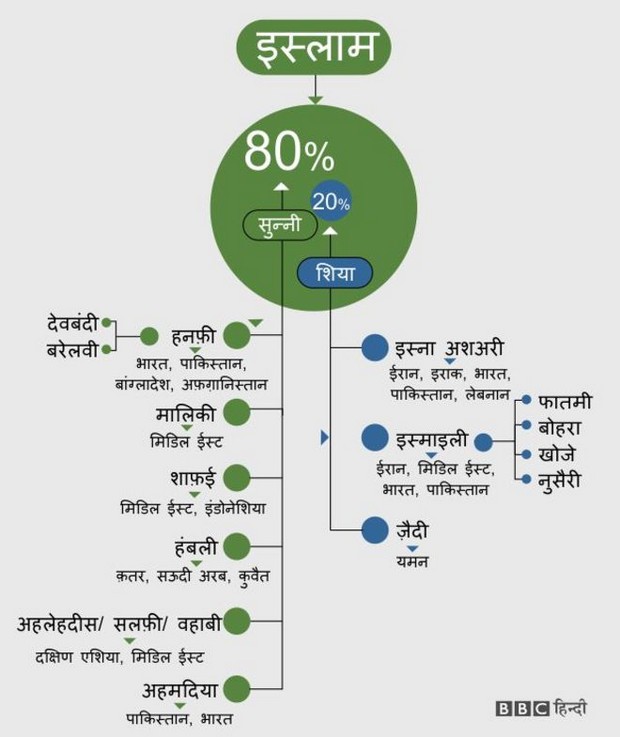
इस्लाम के सभी अनुयायी खुद को मुसलमान कहते हैं लेकिन इस्लामिक कानून (फ़िक़ह) और इस्लामिक इतिहास की अपनी-अपनी समझ के आधार पर मुसलमान कई पंथों में बंटे हैं। बड़े पैमाने पर या संप्रदाय के आधार पर देखा जाए तो मुसलमानों को दो हिस्सों-सुन्नी और शिया में बांटा जा सकता है। हालांकि शिया और सुन्नी भी कई फ़िरकों या पंथों में बंटे हुए हैं।
बात अगर शिया-सुन्नी की करें तो दोनों ही इस बात पर सहमत हैं कि अल्लाह एक है, मोहम्मद साहब उनके दूत हैं और कुरान आसमानी किताब यानी अल्लाह की भेजी हुई किताब है। लेकिन दोनों समुदाय में विश्वासों और पैगम्बर मोहम्मद की मौत के बाद उनके उत्तराधिकारी के मुद्दे पर गंभीर मतभेद हैं। इन दोनों के इस्लामिक कानून भी अलग-अलग हैं।
सुन्नी : सुन्नी या सुन्नत का मतलब उस तौर तरीके को अपनाना है जिस पर पैगम्बर मोहम्मद (570-632 ईसवी) ने खुद अमल किया हो और इसी हिसाब से वे सुन्नी कहलाते हैं। एक अनुमान के मुताबिक, दुनिया के लगभग 80-85 प्रतिशत मुसलमान सुन्नी हैं जबकि 15 से 20 प्रतिशत के बीच शिया हैं।
सुन्नी मुसलमानों का मानना है कि पैगम्बर मोहम्मद के बाद उनके ससुर हजरत अबु-बकर (632-634 ईसवी) मुसलमानों के नए नेता बने, जिन्हें खलीफा कहा गया। इस तरह से अबु-बकर के बाद हज़रत उमर (634-644 ईसवी), हज़रत उस्मान (644-656 ईसवी) और हज़रत अली (656-661 ईसवी) मुसलमानों के नेता बने।
इन चारों को ख़ुलफ़ा-ए-राशिदीन यानी सही दिशा में चलने वाला कहा जाता है। इसके बाद से जो लोग आए, वो राजनीतिक रूप से तो मुसलमानों के नेता कहलाए लेकिन धार्मिक एतबार से उनकी अहमियत कोई ख़ास नहीं थी।
जहां तक इस्लामिक क़ानून की व्याख्या का सवाल है सुन्नी मुसलमान मुख्य रूप से चार समूह में बंटे हैं। हालांकि पांचवां समूह भी है जो इन चारों से ख़ुद को अलग कहता है। इन पांचों के विश्वास और आस्था में बहुत अंतर नहीं है, लेकिन इनका मानना है कि उनके इमाम या धार्मिक नेता ने इस्लाम की सही व्याख्या की है।

दरअसल सुन्नी इस्लाम में इस्लामी क़ानून के चार प्रमुख स्कूल हैं। आठवीं और नवीं सदी में लगभग 150 साल के अंदर चार प्रमुख धार्मिक नेता पैदा हुए। उन्होंने इस्लामिक क़ानून की व्याख्या की और फिर आगे चलकर उनके मानने वाले उस फ़िरक़े के समर्थक बन गए।
ये चार इमाम थे- इमाम अबू हनीफ़ा (699-767 ईसवी), इमाम शाफ़ई (767-820 ईसवी), इमाम हंबल (780-855 ईसवी) और इमाम मालिक (711-795 ईसवी)।
हनफ़ी : इमाम अबू हनीफ़ा के मानने वाले हनफ़ी कहलाते हैं। इस फ़िक़ह या इस्लामिक क़ानून के मानने वाले मुसलमान भी दो गुटों में बंटे हुए हैं। एक देवबंदी हैं तो दूसरे अपने आप को बरेलवी कहते हैं।
देवबंदी और बरेलवी : दोनों ही नाम उत्तर प्रदेश के दो ज़िलों, देवबंद और बरेली के नाम पर है। दरअसल 20वीं सदी के शुरू में दो धार्मिक नेता मौलाना अशरफ़ अली थानवी (1863-1943) और अहमद रज़ा ख़ां बरेलवी (1856-1921) ने इस्लामिक क़ानून की अलग-अलग व्याख्या की।
अशरफ़ अली थानवी का संबंध दारुल-उलूम देवबंद मदरसा से था, जबकि आला हज़रत अहमद रज़ा ख़ां बरेलवी का संबंध बरेली से था। मौलाना अब्दुल रशीद गंगोही और मौलाना क़ासिम ननोतवी ने 1866 में देवबंद मदरसे की बुनियाद रखी थी। देवबंदी विचारधारा को परवान चढ़ाने में मौलाना अब्दुल रशीद गंगोही, मौलाना क़ासिम ननोतवी और मौलाना अशरफ़ अली थानवी की अहम भूमिका रही है।
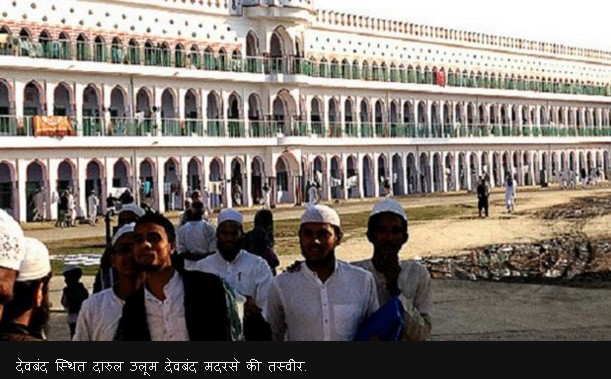
भारतीय उपमहाद्वीप यानी भारत, पाकिस्तान, बांग्लादेश और अफ़गानिस्तान में रहने वाले अधिकांश मुसलमानों का संबंध इन्हीं दो पंथों से है।
देवबंदी और बरेलवी विचारधारा के मानने वालों का दावा है कि क़ुरान और हदीस ही उनकी शरियत का मूल स्रोत है लेकिन इस पर अमल करने के लिए इमाम का अनुसरण करना ज़रूरी है। इसलिए शरीयत के तमाम क़ानून इमाम अबू हनीफ़ा के फ़िक़ह के अनुसार हैं।
वहीं बरेलवी विचारधारा के लोग आला हज़रत रज़ा ख़ान बरेलवी के बताए हुए तरीक़े को ज़्यादा सही मानते हैं। बरेली में आला हज़रत रज़ा ख़ान की मज़ार है जो बरेलवी विचारधारा के मानने वालों के लिए एक बड़ा केंद्र है। दोनों में कुछ ज़्यादा फ़र्क़ नहीं लेकिन कुछ चीज़ों में मतभेद हैं। जैसे बरेलवी इस बात को मानते हैं कि पैग़म्बर मोहम्मद सब कुछ जानते हैं, जो दिखता है वो भी और जो नहीं दिखता है वो भी। वह हर जगह मौजूद हैं और सब कुछ देख रहे हैं।
वहीं देवबंदी इसमें विश्वास नहीं रखते। देवबंदी अल्लाह के बाद नबी को दूसरे स्थान पर रखते हैं लेकिन उन्हें इंसान मानते हैं। बरेलवी सूफ़ी इस्लाम के अनुयायी हैं और उनके यहां सूफ़ी मज़ारों को काफ़ी महत्व प्राप्त है जबकि देवबंदियों के पास इन मज़ारों की बहुत अहमियत नहीं है, बल्कि वो इसका विरोध करते हैं।
मालिकी : इमाम अबू हनीफ़ा के बाद सुन्नियों के दूसरे इमाम, इमाम मालिक हैं जिनके मानने वाले एशिया में कम हैं। उनकी एक महत्वपूर्ण किताब 'इमाम मोत्ता' के नाम से प्रसिद्ध है। उनके अनुयायी उनके बताए नियमों को ही मानते हैं। ये समुदाय आमतौर पर मध्य पूर्व एशिया और उत्तरी अफ्रीका में पाए जाते हैं।
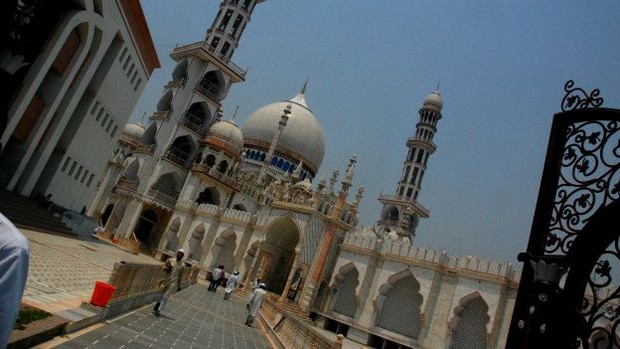
शाफ़ई : शाफ़ई इमाम मालिक के शिष्य हैं और सुन्नियों के तीसरे प्रमुख इमाम हैं। मुसलमानों का एक बड़ा तबक़ा उनके बताए रास्तों पर अमल करता है, जो ज्यादातर मध्य पूर्व एशिया और अफ्रीकी देशों में रहता है। आस्था के मामले में यह दूसरों से बहुत अलग नहीं है लेकिन इस्लामी तौर-तरीक़ों के आधार पर यह हनफ़ी फ़िक़ह से अलग है। उनके अनुयायी भी इस बात में विश्वास रखते हैं कि इमाम का अनुसरण करना ज़रूरी है।
हंबली : सऊदी अरब, क़तर, कुवैत, मध्य पूर्व और कई अफ्रीकी देशों में भी मुसलमान इमाम हंबल के फ़िक़ह पर ज्यादा अमल करते हैं और वे अपने आपको हंबली कहते हैं।
सऊदी अरब की सरकारी शरीयत इमाम हंबल के धार्मिक क़ानूनों पर आधारित है। उनके अनुयायियों का कहना है कि उनका बताया हुआ तरीक़ा हदीसों के अधिक करीब है। इन चारों इमामों को मानने वाले मुसलमानों का ये मानना है कि शरीयत का पालन करने के लिए अपने अपने इमाम का अनुसरण करना ज़रूरी है।
सल्फ़ी, वहाबी और अहले हदीस : सुन्नियों में एक समूह ऐसा भी है जो किसी एक ख़ास इमाम के अनुसरण की बात नहीं मानता और उसका कहना है कि शरीयत को समझने और उसका सही ढंग से पालन करने के लिए सीधे क़ुरान और हदीस (पैग़म्बर मोहम्मद के कहे हुए शब्द) का अध्ययन करना चाहिए। इसी समुदाय को सल्फ़ी और अहले-हदीस और वहाबी आदि के नाम से जाना जाता है।
यह संप्रदाय चारों इमामों के ज्ञान, उनके शोध अध्ययन और उनके साहित्य की क़द्र करता है। लेकिन उसका कहना है कि इन इमामों में से किसी एक का अनुसरण अनिवार्य नहीं है। उनकी जो बातें क़ुरान और हदीस के अनुसार हैं उस पर अमल तो सही है लेकिन किसी भी विवादास्पद चीज़ में अंतिम फ़ैसला क़ुरान और हदीस का मानना चाहिए।

सल्फ़ी समूह का कहना है कि वह ऐसे इस्लाम का प्रचार चाहता है जो पैग़म्बर मोहम्मद के समय में था। इस सोच को परवान चढ़ाने का सेहरा इब्ने तैमिया और मोहम्मद बिन अब्दुल वहाब हुआ और उनके नाम पर ही यह समुदाय वहाबी नाम से भी जाना जाता है। मध्य पूर्व के अधिकांश इस्लामिक विद्वान उनकी विचारधारा से ज़्यादा प्रभावित हैं। इस समूह के बारे में एक बात बड़ी मशहूर है कि यह सांप्रदायिक तौर पर बेहद कट्टरपंथी और धार्मिक मामलों में बहुत कट्टर है। सऊदी अरब के मौजूदा शासक इसी विचारधारा को मानते हैं। अल-क़ायदा प्रमुख ओसामा बिन लादेन भी सल्फ़ी विचाराधारा के समर्थक थे।
सुन्नी बोहरा : गुजरात, महाराष्ट्र और पाकिस्तान के सिंध प्रांत में मुसलमानों के कारोबारी समुदाय के एक समूह को बोहरा के नाम से जाना जाता है। बोहरा, शिया और सुन्नी दोनों होते हैं। सुन्नी बोहरा हनफ़ी इस्लामिक क़ानून पर अमल करते हैं जबकि सांस्कृतिक तौर पर दाऊदी बोहरा यानी शिया समुदाय के क़रीब हैं।
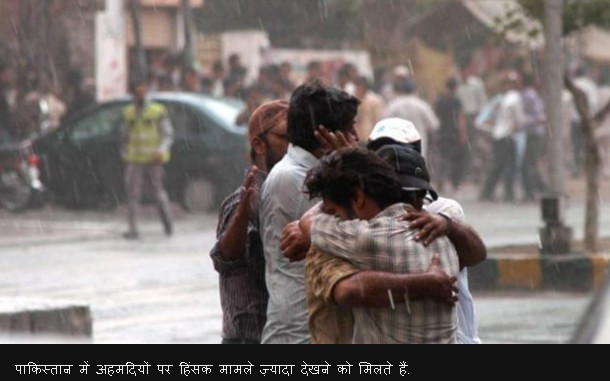
अहमदिया : हनफ़ी इस्लामिक क़ानून का पालन करने वाले मुसलमानों का एक समुदाय अपने आप को अहमदिया कहता है। इस समुदाय की स्थापना भारतीय पंजाब के क़ादियान में मिर्ज़ा ग़ुलाम अहमद ने की थी। इस पंथ के अनुयायियों का मानना है कि मिर्ज़ा ग़ुलाम अहमद ख़ुद नबी का ही एक अवतार थे।
उनके मुताबिक़ वे खुद कोई नई शरीयत नहीं लाए बल्कि पैग़म्बर मोहम्मद की शरीयत का ही पालन कर रहे हैं लेकिन वे नबी का दर्जा रखते हैं। मुसलमानों के लगभग सभी संप्रदाय इस बात पर सहमत हैं कि मोहम्मद साहब के बाद अल्लाह की तरफ़ से दुनिया में भेजे गए दूतों का सिलसिला ख़त्म हो गया है। लेकिन अहमदियों का मानना है कि मिर्ज़ा ग़ुलाम अहमद ऐसे धर्म सुधारक थे जो नबी का दर्जा रखते हैं।
बस इसी बात पर मतभेद इतने गंभीर हैं कि मुसलमानों का एक बड़ा वर्ग अहमदियों को मुसलमान ही नहीं मानता। हालांकि भारत, पाकिस्तान और ब्रिटेन में अहमदियों की अच्छी ख़ासी संख्या है। पाकिस्तान में अहमदियों पर हिंसक मामले ज़्यादा देखने को मिलते हैं। पाकिस्तान में तो आधिकारिक तौर पर अहमदियों को इस्लाम से ख़ारिज कर दिया गया है।
शिया : शिया मुसलमानों की धार्मिक आस्था और इस्लामिक क़ानून सुन्नियों से काफ़ी अलग है। वह पैग़म्बर मोहम्मद के बाद ख़लीफ़ा नहीं बल्कि इमाम नियुक्त किए जाने के समर्थक हैं। उनका मानना है कि पैग़म्बर मोहम्मद की मौत के बाद उनके असल उत्तारधिकारी उनके दामाद हज़रत अली थे। उनके अनुसार पैग़म्बर मोहम्मद भी अली को ही अपना वारिस घोषित कर चुके थे लेकिन धोखे से उनकी जगह हज़रत अबू-बकर को नेता चुन लिया गया।
शिया मुसलमान मोहम्मद के बाद बने पहले तीन ख़लीफ़ा को अपना नेता नहीं मानते बल्कि उन्हें ग़ासिब कहते हैं। ग़ासिब अरबी का शब्द है जिसका अर्थ हड़पने वाला होता है।
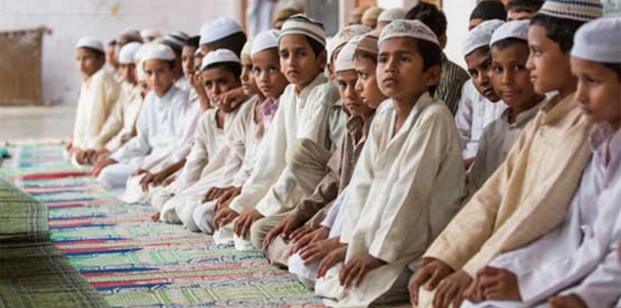
उनका विश्वास है कि जिस तरह अल्लाह ने मोहम्मद साहब को अपना पैग़म्बर बनाकर भेजा था उसी तरह से उनके दामाद अली को भी अल्लाह ने ही इमाम या नबी नियुक्त किया था और फिर इस तरह से उन्हीं की संतानों से इमाम होते रहे। आगे चलकर शिया भी कई हिस्सों में बंट गए।
इस्ना अशरी : सुन्नियों की तरह शियाओं में भी कई संप्रदाय हैं लेकिन सबसे बड़ा समूह इस्ना अशरी यानी बारह इमामों को मानने वाला समूह है। दुनिया के लगभग 75 प्रतिशत शिया इसी समूह से संबंध रखते हैं। इस्ना अशरी समुदाय का कलमा सुन्नियों के कलमे से भी अलग है।
उनके पहले इमाम हज़रत अली हैं और अंतिम यानी बारहवें इमाम ज़माना यानी इमाम महदी हैं। वो अल्लाह, क़ुरान और हदीस को मानते हैं, लेकिन केवल उन्हीं हदीसों को सही मानते हैं जो उनके इमामों के माध्यम से आए हैं।
क़ुरान के बाद अली के उपदेश पर आधारित किताब नहजुल बलाग़ा और अलकाफ़ि भी उनकी महत्वपूर्ण धार्मिक पुस्तक हैं। यह संप्रदाय इस्लामिक धार्मिक क़ानून के मुताबिक़ जाफ़रिया में विश्वास रखता है। ईरान, इराक़, भारत और पाकिस्तान सहित दुनिया के अधिकांश देशों में इस्ना अशरी शिया समुदाय का दबदबा है।
ज़ैदिया : शियाओं का दूसरा बड़ा सांप्रदायिक समूह ज़ैदिया है, जो बारह के बजाय केवल पांच इमामों में ही विश्वास रखता है। इसके चार पहले इमाम तो इस्ना अशरी शियों के ही हैं लेकिन पांचवें और अंतिम इमाम हुसैन (हज़रत अली के बेटे) के पोते ज़ैद बिन अली हैं जिसकी वजह से वह ज़ैदिया कहलाते हैं। उनके इस्लामिक़ क़ानून ज़ैद बिन अली की एक किताब 'मजमऊल फ़िक़ह' से लिए गए हैं। मध्य पूर्व के यमन में रहने वाले हौसी ज़ैदिया समुदाय के मुसलमान हैं।
इस्माइली शिया : शियों का यह समुदाय केवल सात इमामों को मानता है और उनके अंतिम इमाम मोहम्मद बिन इस्माइल हैं और इसी वजह से उन्हें इस्माइली कहा जाता है। इस्ना अशरी शियों से इनका विवाद इस बात पर हुआ कि इमाम जाफ़र सादिक़ के बाद उनके बड़े बेटे इस्माईल बिन जाफ़र इमाम होंगे या फिर दूसरे बेटे।
इस्ना अशरी समूह ने उनके दूसरे बेटे मूसा काज़िम को इमाम माना और यहीं से दो समूह बन गए। इस तरह इस्माइलियों ने अपना सातवां इमाम इस्माइल बिन जाफ़र को माना। उनकी फ़िक़ह और कुछ मान्यताएं भी इस्ना अशरी शियों से कुछ अलग है।
दाऊदी बोहरा : बोहरा का एक समूह, जो दाऊदी बोहरा कहलाता है, इस्माइली शिया फ़िक़ह को मानता है और इसी विश्वास पर क़ायम है। अंतर यह है कि दाऊदी बोहरा 21 इमामों को मानते हैं।

उनके अंतिम इमाम तैयब अबुल क़ासिम थे जिसके बाद आध्यात्मिक गुरुओं की परंपरा है। इन्हें दाई कहा जाता है और इस तुलना से 52वें दाई सैय्यदना बुरहानुद्दीन रब्बानी थे। 2014 में रब्बानी के निधन के बाद से उनके दो बेटों में उत्तराधिकार का झगड़ा हो गया और अब मामला अदालत में है।
बोहरा भारत के पश्चिमी क्षेत्र ख़ासकर गुजरात और महाराष्ट्र में पाए जाते हैं जबकि पाकिस्तान और यमन में भी ये मौजूद हैं। यह एक सफल व्यापारी समुदाय है जिसका एक धड़ा सुन्नी भी है।
खोजा : खोजा गुजरात का एक व्यापारी समुदाय है जिसने कुछ सदी पहले इस्लाम स्वीकार किया था। इस समुदाय के लोग शिया और सुन्नी दोनों इस्लाम मानते हैं। ज़्यादातर खोजा इस्माइली शिया के धार्मिक क़ानून का पालन करते हैं लेकिन एक बड़ी संख्या में खोजा इस्ना अशरी शियाओं की भी है। लेकिन कुछ खोजे सुन्नी इस्लाम को भी मानते हैं। इस समुदाय का बड़ा वर्ग गुजरात और महाराष्ट्र में पाया जाता है। पूर्वी अफ्रीकी देशों में भी ये बसे हुए हैं।
नुसैरी : शियों का यह संप्रदाय सीरिया और मध्य पूर्व के विभिन्न क्षेत्रों में पाया जाता है। इसे अलावी के नाम से भी जाना जाता है। सीरिया में इसे मानने वाले ज़्यादातर शिया हैं और देश के राष्ट्रपति बशर अल असद का संबंध इसी समुदाय से है। इस समुदाय का मानना है कि अली वास्तव में भगवान के अवतार के रूप में दुनिया में आए थे। उनकी फ़िक़ह इस्ना अशरी में है लेकिन विश्वासों में मतभेद है। नुसैरी पुर्नजन्म में भी विश्वास रखते हैं और कुछ ईसाइयों की रस्में भी उनके धर्म का हिस्सा हैं। इन सबके अलावा भी इस्लाम में कई छोटे छोटे पंथ पाए जाते हैं।
 RSS Feed
RSS Feed Twitter
Twitter









